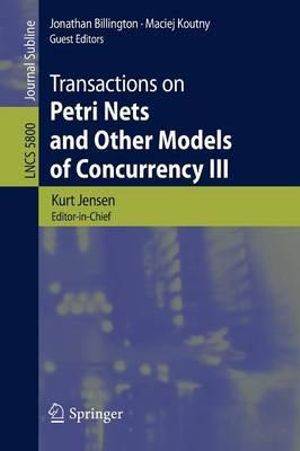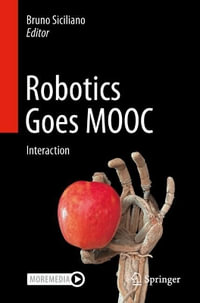
Transactions on Petri Nets and Other Models of Concurrency III
By: Kurt Jensen, Jonathan Billington (Editor), Maciej Koutny (Editor)
Paperback | 11 November 2009
At a Glance
Paperback
$111.38
Aims to ship in 7 to 10 business days
ISBN: 9783642048548
ISBN-10: 3642048544
Series: Lecture Notes in Computer Science
Published: 11th November 2009
Format: Paperback
Language: English
Number of Pages: 296
Audience: Professional and Scholarly
Publisher: Springer Nature B.V.
Country of Publication: DE
Dimensions (cm): 23.39 x 15.6 x 1.58
Weight (kg): 0.45
Shipping
| Standard Shipping | Express Shipping | |
|---|---|---|
| Metro postcodes: | $9.99 | $14.95 |
| Regional postcodes: | $9.99 | $14.95 |
| Rural postcodes: | $9.99 | $14.95 |
How to return your order
At Booktopia, we offer hassle-free returns in accordance with our returns policy. If you wish to return an item, please get in touch with Booktopia Customer Care.
Additional postage charges may be applicable.
Defective items
If there is a problem with any of the items received for your order then the Booktopia Customer Care team is ready to assist you.
For more info please visit our Help Centre.
You Can Find This Book In
This product is categorised by
- Non-FictionComputing & I.T.Computer ScienceComputer Architecture & Logic DesignParallel Processing
- Non-FictionMathematicsDiscrete Mathematics
- Non-FictionComputing & I.T.Digital Lifestyle & Online World: Consumer & User GuidesInternet Guides & Online Services
- Non-FictionMathematicsMathematical FoundationMathematical Logic
- Non-FictionComputing & I.T.Graphical & Digital Media Applications3D Graphics & Modelling
- Non-FictionComputing & I.T.Computer ScienceMathematical Theory of Computation
- Non-FictionComputing & I.T.Computer Programming & Software DevelopmentSoftware Engineering
- Non-FictionComputing & I.T.DatabasesData Capture & Analysis























